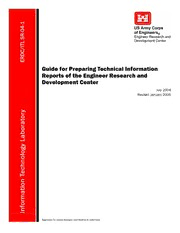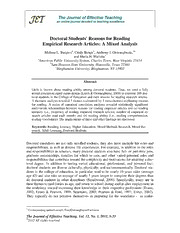
Becoming Solution-Focused In Brief Therapy PDF
Preview Becoming Solution-Focused In Brief Therapy
BECOMING SOLUTION-FOCUSED IN BRIEF THERAPY Copyrighted Material Copyrighted Material BECOMING SOLUTION-FOCUSED IN BRIEF THERAPY John L. Walter Jane E. Peller R Routledge O U TL Taylor & Francis Group E DGNEW YORK AND LONDON E Copyrighted Material Published in 1992 by Published in Great Britain by Routledge Routledge Taylor & Francis Group Taylor & Francis Group 270 Madison Avenue 2 Park Square New York, NY 10016 Milton Park, Abingdon Oxon OX14 4RN © 1992 by Taylor & Francis Group, LLC Routledge is an imprint of Taylor & Francis Group Printed in the United States of America on acid-free paper 28 27 26 25 24 23 22 21 20 19 International Standard Book Number-10: 0-87630-653-9 (Hardcover) International Standard Book Number-13: 978-0-87630-653-6 (Hardcover) Library of Congress catalog number: 91-43491 No part of this book may be reprinted, reproduced, transmitted, or utilized in any form by any electronic, mechanical, or other means, now known or hereafter invented, including photocopying, microfilming, and recording, or in any information storage or retrieval system, without written permission from the publishers. Trademark Notice: Product or corporate names may be trademarks or registered trademarks, and are used only for identification and explanation without intent to infringe. Library of Congress Cataloging-in-Publication Data Catalog record is available from the Library of Congress informa Visit the Taylor & Francis Web site at http://www.taylorandfrancis.com Taylor & Francis Group and the Routledge Web site at is the Academic Division of Informa plc. http://www.routledge-ny.com Copyrighted Material To the memory of John's mother, Afra Walter, and to our parents, William Walter, Jonesy Wagner, Bert Peller, Victor Wagner, and Suzanne Peller, who in their own ways continually keep us optimistic and on track. Copyrighted Material Copyrighted Material Contents Acknowledgments ix Introduction xi 1. Becoming Solution-Focused 1 It Starts with a Question 2. Assumptions of a Solution-Focused Approach 10 3. A Positive Start 37 4. Weil-Defined Goals 51 5. Pathways of Constructing Solutions 63 6. The Hypothetical Solution Frame 76 7. The Exceptions Frame 91 8. Positive Feedback 106 9. What Do We Do Next? 140 "Every Session Is the First, Every Session Is the Last" 10. Enhancing "Agency" 159 Facilitating What Seems Out of Control as Within Control 11. The Interactional Matrix 168 12. "But I Want Them to Be Different" 188 When Someone Else Is Defined as the Problem 13. Cooperating 200 14. Putting It All Together 217 Case Examples 15. Voluntary or Involuntary 242 A Basic Distinction 16. The Involuntary Client 247 vii Copyrighted Material viii Contents 17. It Ends with a Working Solution 255 A Final Word 259 References 260 Name Index 263 Subject Index 265 Copyrighted Material Acknowledgments A book is never written by the authors alone. It is always a team effort and the authors just get to have their names on the cover. We want to thank family, friends, trainees, clients, and workshop participants, all of whom have contributed in their own unique ways. We want to say a special thanks to Insoo Kim Berg and Steve de Shazer. Through our association and friendship with each of them, we have grown tremendously. We feel honored to be the spokespersons for many of their contributions to the development of Brief Therapy that they shared with us. John wants to thank Insoo for first asking him, "Why do you want to be a Brief Therapist? It could be a very upsetting change." Jane wants to thank Steve for reminding her to be "simpleminded." We also want to offer a special thank you to Eve Lipchik, who was the first to suggest that we write a manual. Her support was gentle in each reminder of "You can do it." We want to thank our friends, Jill Freedman and Gene Combs, who having struggled through the writing and publication of their own book, were a constant source of encouragement and helpful hints. John wants to thank Michael Banks. Through Michael's outsider's curiosity and provoking questions, John sharpened and developed his own thinking about what we do. Michael's enthusiasm for our project was always there. Jane wants to thank her chairperson at Northeastern Illinois Univer sity, Wanda Bracy, for giving her the release time to work on the book. She also wants to thank Wanda for enhancing Jane's confidence in being able to take on any project by their mutual suffering through the self- study of their department. ix Copyrighted Material
The list of books you might like

Do Epic Shit

Shatter Me Complete Collection (Shatter Me; Destroy Me; Unravel Me; Fracture Me; Ignite Me)

Corrupt (Devil's Night #1)

The Spanish Love Deception

Алгебра. 8 класс

DTIC ADA445281: Guide for Preparing Technical Information Reports of the Engineer Research and Development Center

Negro zine 2 (2006 Apr)

COMESA 235-2: Leather - Physical and mechanical tests - Determination of tear load - Part 2: Double edge tear

TS 129 199-5 - V6.4.0 - Universal Mobile Telecommunications System (UMTS); Open Service Access (OSA); Parlay X web services; Part 5: Multimedia messaging (3GPP TS 29.199-05 version 6.4.0 Release 6)

Henry is Twenty by Samuel Merwin

A Text Book Of Inorganic Chemistry

Tafseer-e-Siddiqi (Volume 4)

Not a problem? girls and school exclusion

Cage aquaculture - The Ocean Stewards Institute

Nature’s Crossroads: The Twin Cities and Greater Minnesota

Arms and Armor in Africa

A Hopf algebra having a separable Galois extension is finite dimensional

A study of factors affecting physician remuneration in staff model HMOs and group practices : final report

IS 11114-3: Earth-moving machinery - Definitions of dimensions and codes, Part 3: Equipment and attachments

NASA Technical Reports Server (NTRS) 19930015490: The systems engineering overview and process (from the Systems Engineering Management Guide, 1990)

Tony And The Beetles by Philip K Dick

Little Nettie by Susan Bogert Warner Anna Bartlett Warner


